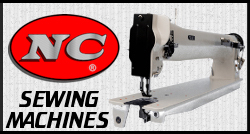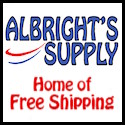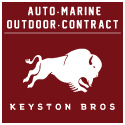-
 Humberto barbosa
0Good upholstery guys I'm new in this profession I'm hooking up with my father who is an upholsterer for 43 years I would like to know new techniques to innovate a bit the question is the following.
Humberto barbosa
0Good upholstery guys I'm new in this profession I'm hooking up with my father who is an upholsterer for 43 years I would like to know new techniques to innovate a bit the question is the following.
how to remove grease from ceilings that remains after removing the rotten foam I use isopropyl alcohol or thinner but some jobs do not work
thank you for your attention
greetings Humberto barbosa -
 Steve M Horne
0Ronsonol lighter fluid with an air nozzle works great, squirt it on blow it off. Say ms right on the label for removing grease and tar.
Steve M Horne
0Ronsonol lighter fluid with an air nozzle works great, squirt it on blow it off. Say ms right on the label for removing grease and tar. -
 Al Decker
22Ronsonol & Zippo lighter fluid is naptha.
Al Decker
22Ronsonol & Zippo lighter fluid is naptha.
Which is actually what the Dry Cleaners use.
Also sold as Camp Stove & Lantern fuel. (Larger cans & cheaper per fluid ounce!)
The lighter fluid has a yellow-ish tinge to it. The Camp Stove fuel doesn't.
The lighter fluid works great when used to remove stains on darker fabrics. But on lighter materials, it can leave a yellow stain or ring. Always do a small out-of-sight test first.
Naptha evaporates fast. Used in small quantities for stain or sticky-stuff removal in an average sized shop doesn't pose much of a health or safety risk.
But when used for larger projects, such as vinyl roof removal &/or the foam padding, those fumes can build up. Wear a proper mask. Paper/fabric Covid masks aren't sufficient.
Be aware of pilot lights.
Naptha won't hurt paint, but it will remove wax. (...which could open a whole 'nuther can o'worms.) -
 Fred Mattson
152I assume you are referring to headliners. These should first be scraped with any number of methods and then thoroughly cleaned with a solvent that will remove the adhesive without leaving a residue behind.
Fred Mattson
152I assume you are referring to headliners. These should first be scraped with any number of methods and then thoroughly cleaned with a solvent that will remove the adhesive without leaving a residue behind.
I have relied on the use of lacquer thinner for this task for many reasons.
First, it dissolves glue quickly and it evaporates fast. The fumes are something to be cautious of, but if you are well ventilated and use a mask you will be fine.
Second, Lacquer thinner does not leave a residue like many petroleum base products that you have mentioned will. Glue will not adhere to this residue and you end up with another stage of cleaning to get rid of the oil. -
 Dan Ulrich
3My go to was denatured alcohol, melts away the rotten foam and used sparingly to clean a spot on a headliner fabric that ended up with it on it. I used a spray bottle to apply it to the stripped headliner board and also to clean surface where the sunroof slider slides into. Protect the interior in case of a drip.
Dan Ulrich
3My go to was denatured alcohol, melts away the rotten foam and used sparingly to clean a spot on a headliner fabric that ended up with it on it. I used a spray bottle to apply it to the stripped headliner board and also to clean surface where the sunroof slider slides into. Protect the interior in case of a drip. -
 Mike Goldring
9On some of the upholstery forums guys have mentioned sprinkling baby powder or cornstarch on the board , they say it absorbs the oil from the deteriorated foam, then brushing and blowing it off. I haven't tried that yet. We have used full strenth Castrol Super Clean ( the purple stuff) you do have to let the board dry well but it works ,after it dries the board is not tacky or sticky.
Mike Goldring
9On some of the upholstery forums guys have mentioned sprinkling baby powder or cornstarch on the board , they say it absorbs the oil from the deteriorated foam, then brushing and blowing it off. I haven't tried that yet. We have used full strenth Castrol Super Clean ( the purple stuff) you do have to let the board dry well but it works ,after it dries the board is not tacky or sticky. -
 Humberto barbosa
0thanks guys for the tips
Humberto barbosa
0thanks guys for the tips
they will be very useful in our workshop in portugal we use a softer wire brush after removing the rotten sponge we clean it or with thinner or isopropyl alcohol but i always get the feeling that it is not enough but to date it has not taken off any more once thanks everyone
Welcome to The Hog Ring!
This forum is only for auto upholstery pros, apprentices and students. Join today to start chatting.








- Terms of Service
- Useful Hints and Tips
- Sign In
- Created with PlushForums
- © 2025 The Hog Ring





